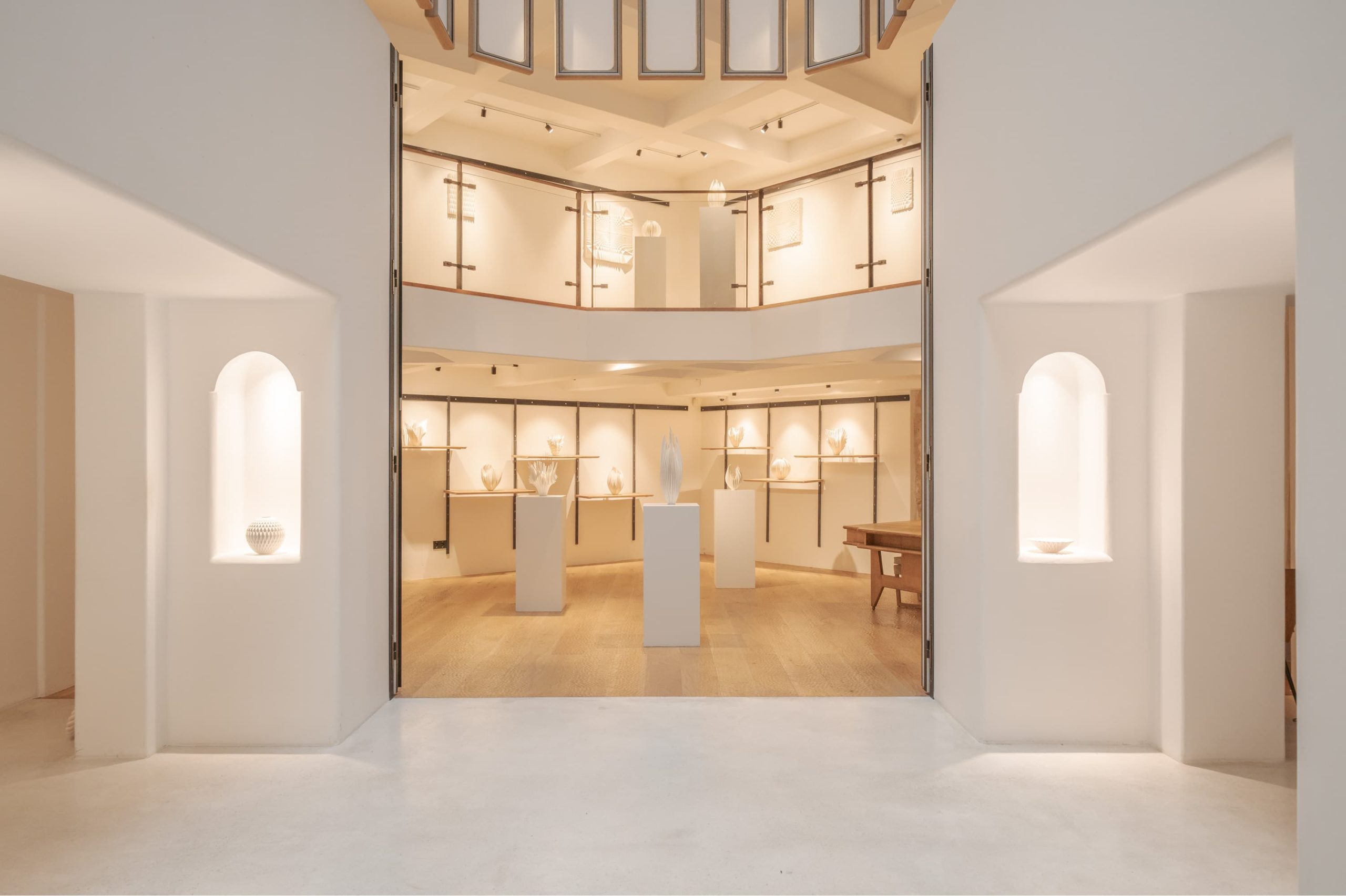
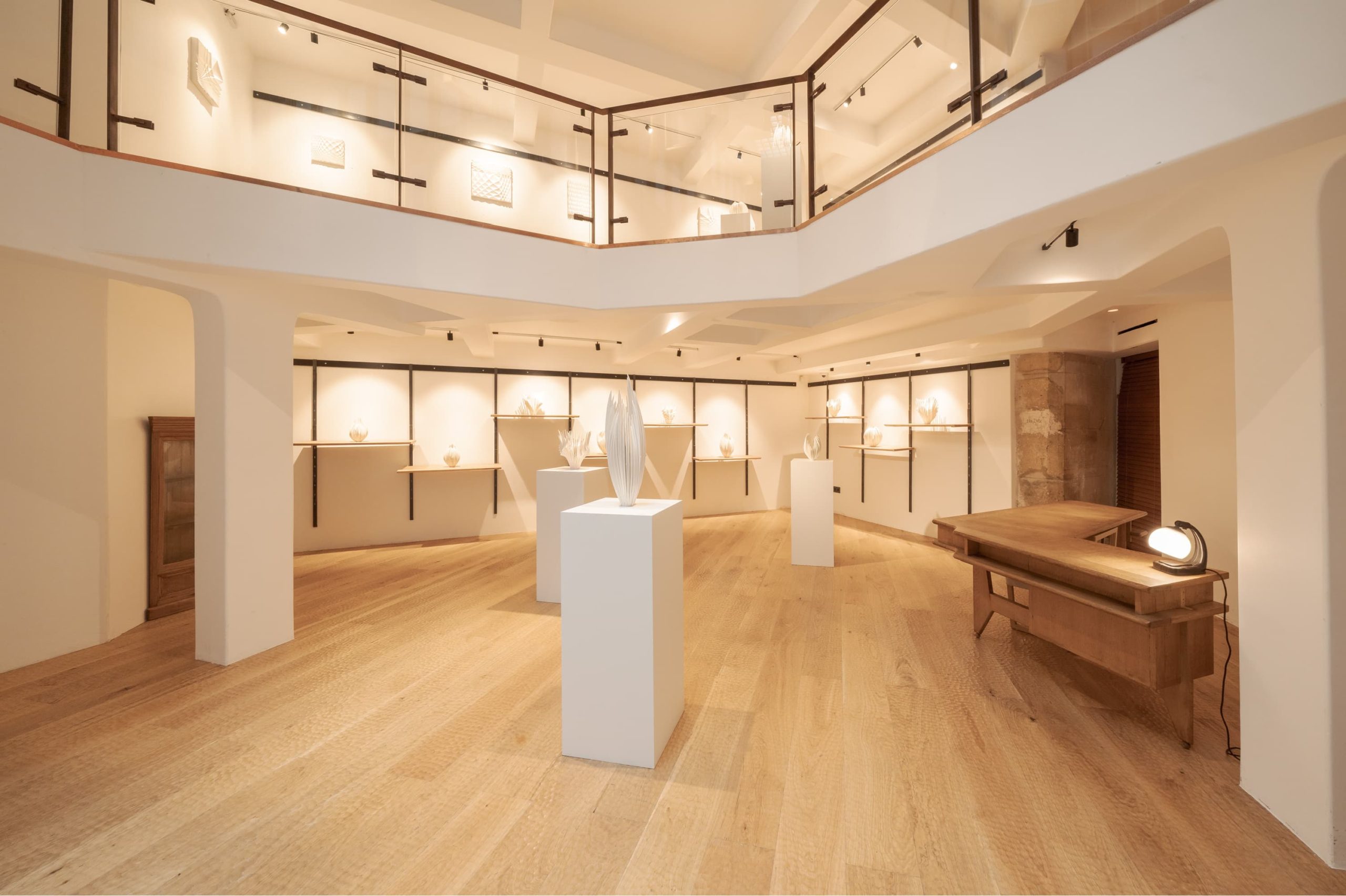
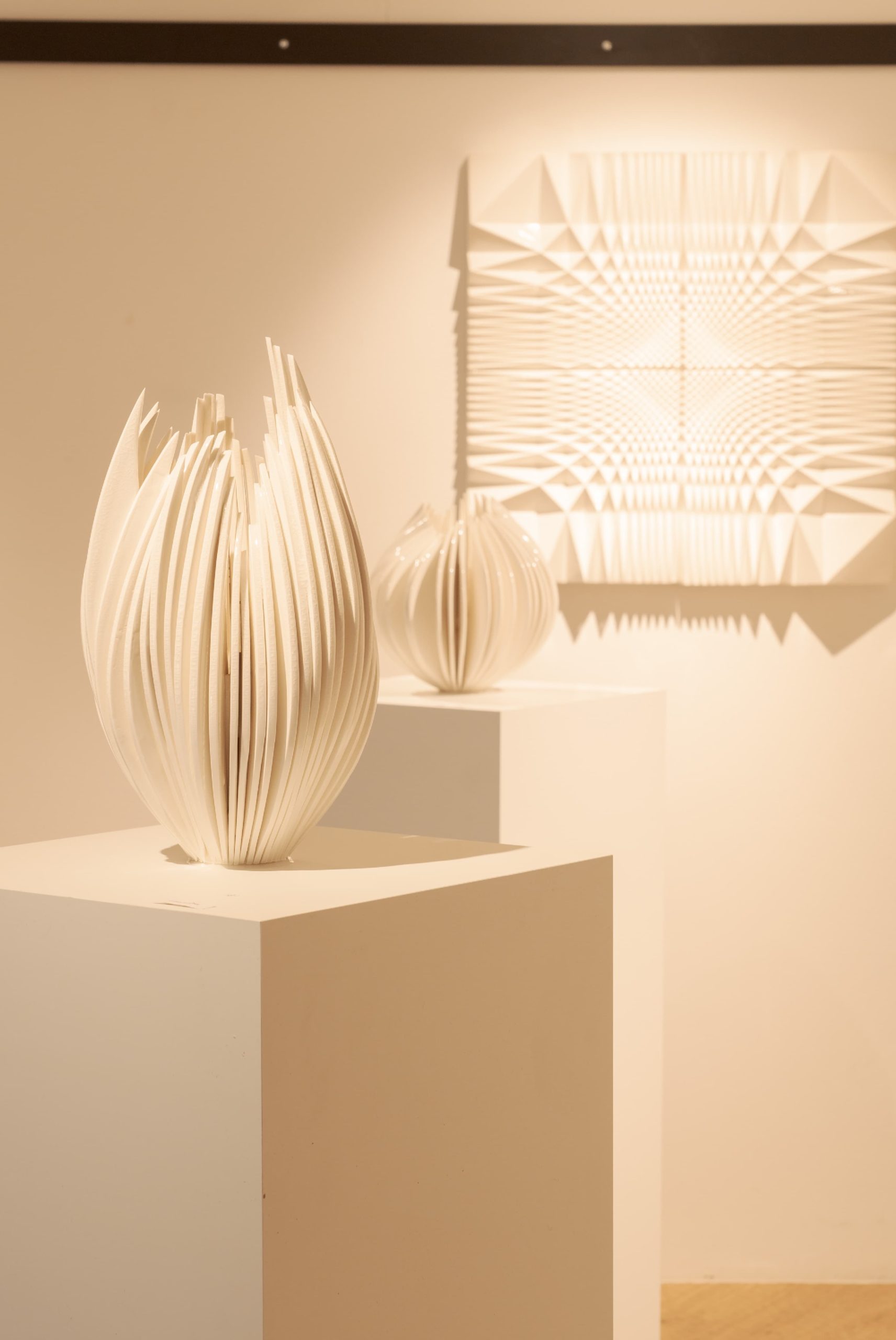
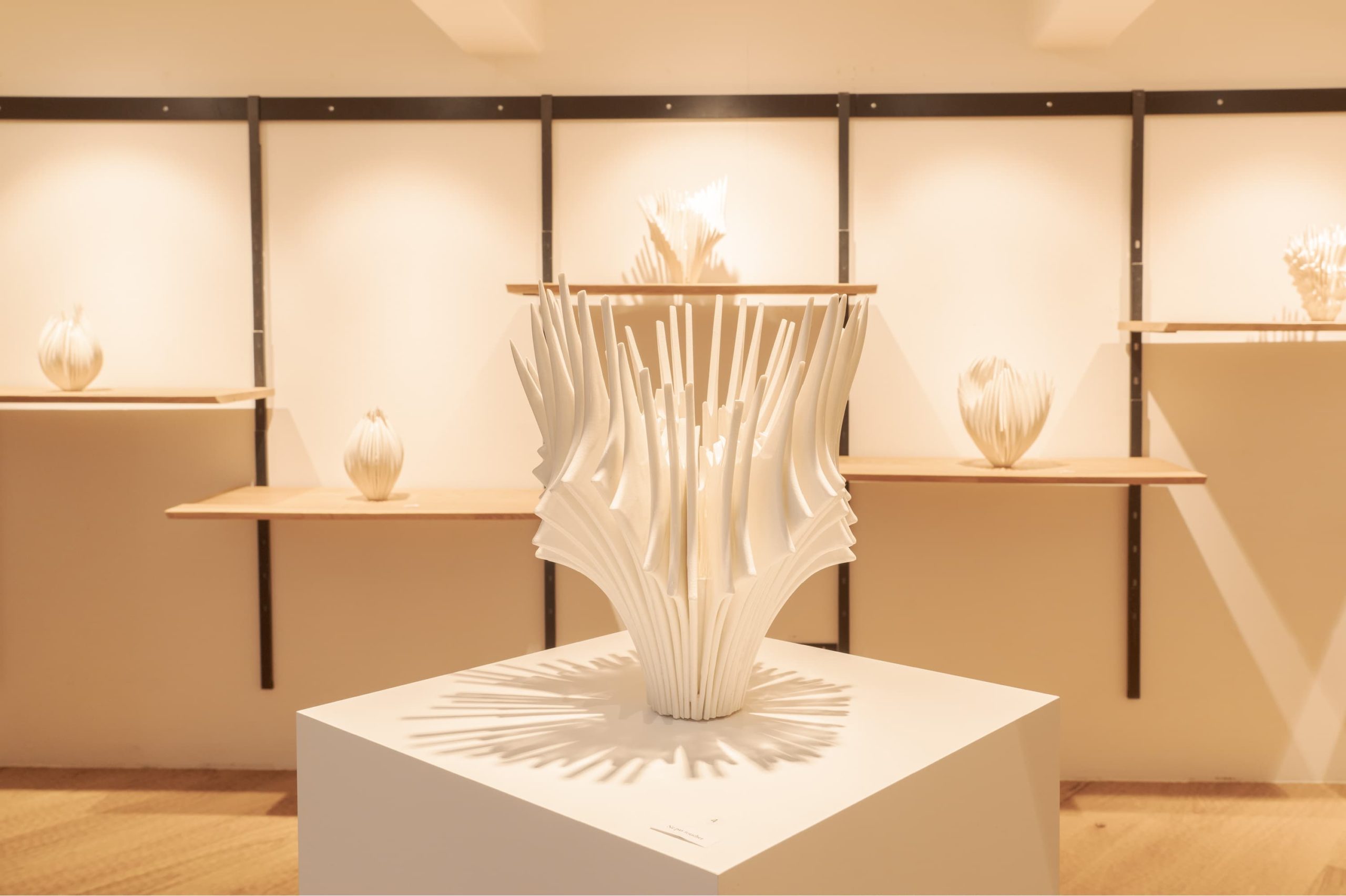
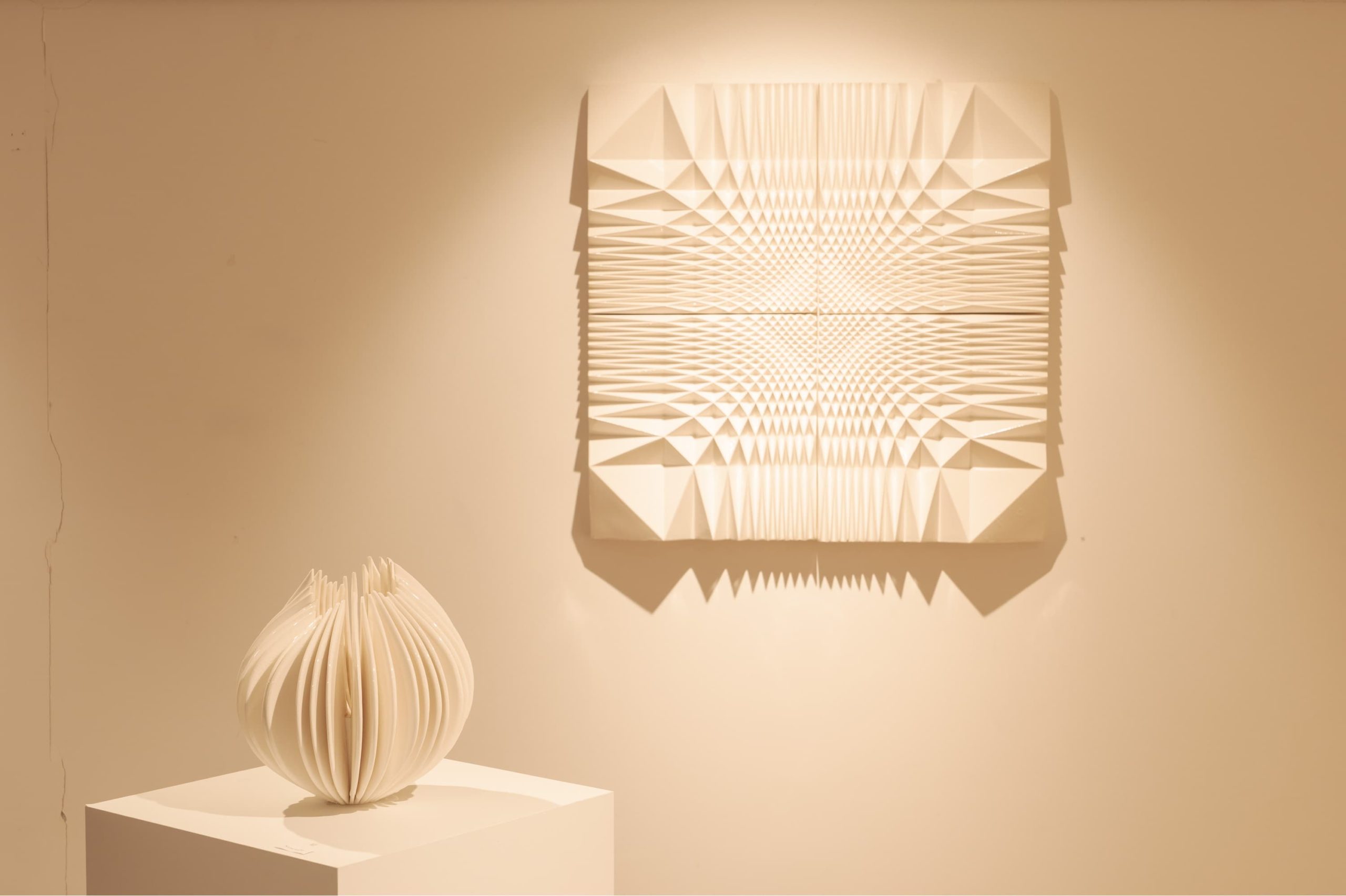
Nara Yuki’s workshop is divided into two. A large space devoted to the ceramic workshop within the family pottery workshop, in whose filiation it fits in an original way. The upper floor is an architecture studio, where he develops plans and models of buildings, but also the algorithms that serve as the basis for his ceramic works. A working day consists of going back and forth between these two spaces, generating a network of mutual influences between the two disciplines: the architectural idea is first modeled in the ground before being clarified in a model; each piece of ceramic has been previously designed according to an architectural geometry.
The ceramic works bear no resemblance to the style that made his family famous – the tan tea bowls bearing the mark of their maker’s hand. Nara Yuki’s ceramics have a practical function: they are vases, which allow a privileged dialogue with the most inventive floral arrangements. As much as their glaze is uniformly white, their volumes are complex: around a small container modeled in earth, dozens of slices of the same earth, each previously cut out with a stencil, are arranged like the spokes of a helix around of their hub. A long firing followed by repeated application of glaze allows the complex composition to keep its form.
The result is amazing. Each vase consists of the decomposition into strata of a geometric volume. Each point of view on the vase offers a new apprehension of contours and relief, as if a mathematical model rendered dynamically on a computer screen had frozen into a material embodiment. We can see the memory of the mathematical models that fascinated artists in the first third of the 20th century, as well as a marked interest in experimenting with op art. However, Nara Yuki’s main formal reference is Jōmon pottery, the outline of which seems to have been transferred while hollowing it out. A closer examination tells us that the white glaze dressing each vase is much less uniform than it seems, once past the astonishment of the encounter with these unexpected shapes. This is what reinforces the impression, almost airy, of lightness that emanates from each work.
Through the use of modeling technologies and a reedom with regard to the material used, Nara Yuki opens up multiple breaches in the art of ceramics. Each work inscribes ancestral manual techniques in a new field: that of abstraction.
Nara Yuki was born in 1989 in Kanazawa (Ishikawa prefecture), into the Ohi family, a famous line of potters who, over eleven generations, have developed their own style of bowls for the tea ceremony, which can be recognized, among other things, by its brown glaze (ameyū in Japanese), inherited from the Kyoto raku style (known for the piece-by-piece production of each bowl, without a lathe and fired individually). His studies in architecture at the University of the Arts in Tokyo, combined with his family education, allowed this innovative interpretation of ceramics.
En collaboration avec Galerie Mikiko Fabiani
